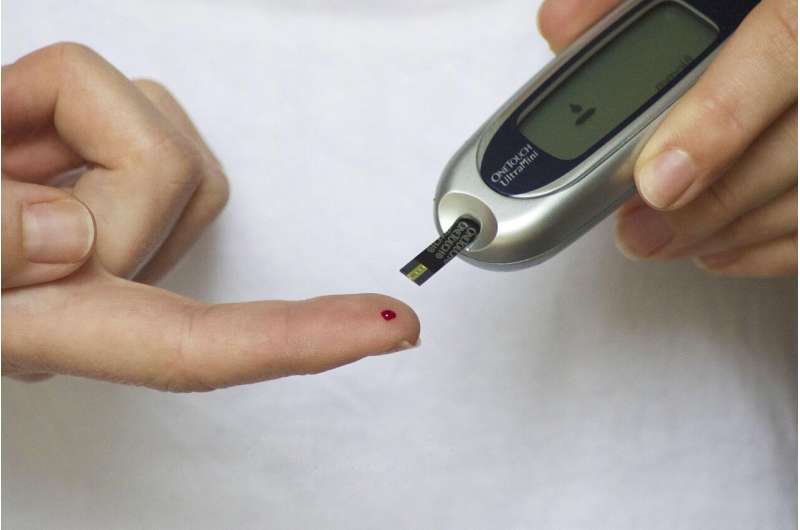This article has been reviewed according to Science X's editorial process and policies. Editors have highlighted the following attributes while ensuring the content's credibility:
fact-checked
trusted source
proofread
Type 2 diabetes increased among youth during and after COVID-19 pandemic

The number of children diagnosed with type 2 diabetes continued to rise in the year following the beginning of the COVID-19 pandemic, according to research being presented Thursday at ENDO 2023, the Endocrine Society's annual meeting in Chicago, Ill.
"It was hypothesized that in the first year of the COVID-19 pandemic, many factors including school shutdowns causing kids to be less active, snacking more often, or eating more unhealthy foods led to increased weight gain and more cases of type 2 diabetes," said Esther Bell-Sambataro, M.D., an endocrinology fellow at Nationwide Children's Hospital in Columbus, Ohio.
The researchers conducted a retrospective chart review study at a tertiary children's hospital to determine the increase in the proportion of type 2 diabetes cases among all new onset diabetes patients in the second year of the pandemic. They identified youth patients (0-18 years old) who were diagnosed with new-onset type 1 diabetes (T1D) or type 2 diabetes (T2D) based on an electronic medical record (EMR) database. The cases were categorized into four years (year 1: 3/1/2018-2/28/2019, year 2: 3/1/2019-2/29/2020, year 3: 3/1/2020-2/28/2021, and year 4: 3/1/2021-2/28/2022) with years 1 and 2 being pre-pandemic and year 3 and 4 during pandemic.
The yearly frequency of patients with new onset T1D from years 1 through year 4 respectively was 191, 193, 231 and 262 cases. Similarly, the yearly frequency for T2D cases was 63, 45, 109 and 130 respectively for years 1 through year 4. Among all new onset diabetes in youth, the relative proportion of T2D for year 1 was 24.8%, year 2 was 18.9%, year 3 was 32.1% and year 4 was 33.2%. The increase in the proportion of new onset diabetes patients who developed T2D from years one to four was statistically significant.
The percentage of Black children across all new-onset T2D increased significantly from 31% in year one to 51.3% in year four. The researchers also observed greater BMI scores in those with T1D from years one to four. However, BMI scores at diabetes diagnosis decreased significantly among those with T2D between years two and three but spiked again between years three and four.
This research shows that among all youth with new onset diabetes, the increase in the proportion of cases with T2D has persisted beyond the first year of the COVID-19 pandemic, which suggests that the increase may not be only due to pandemic-related restrictions and lifestyle changes.
"Even though we may have returned to pre-pandemic times in several aspects, the increased risk of our youth developing type 2 diabetes that started during the pandemic has persisted," Bell-Sambataro said. "The reasons for this are not completely known and need further evaluation; therefore, we must be vigilant and monitor our at-risk youth (those with genetic risk factors, obesity, less active lifestyles) and take them to see their doctors if signs of diabetes such as increased thirst and frequent urination arise.
More information: Conference livestream at endomediastream.com.




















